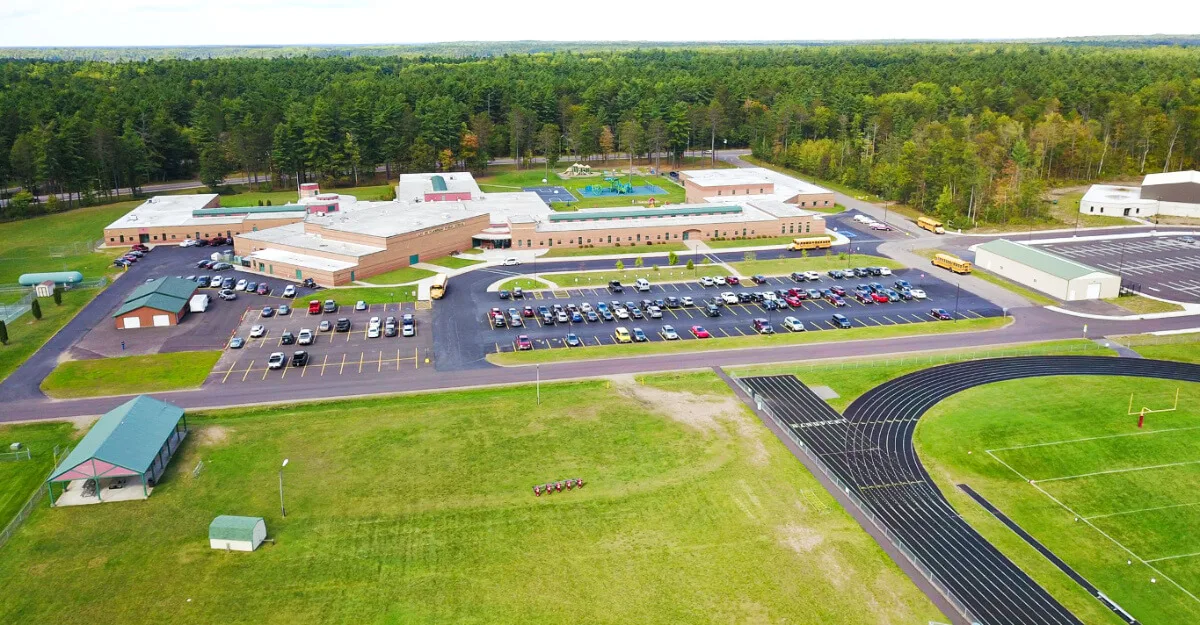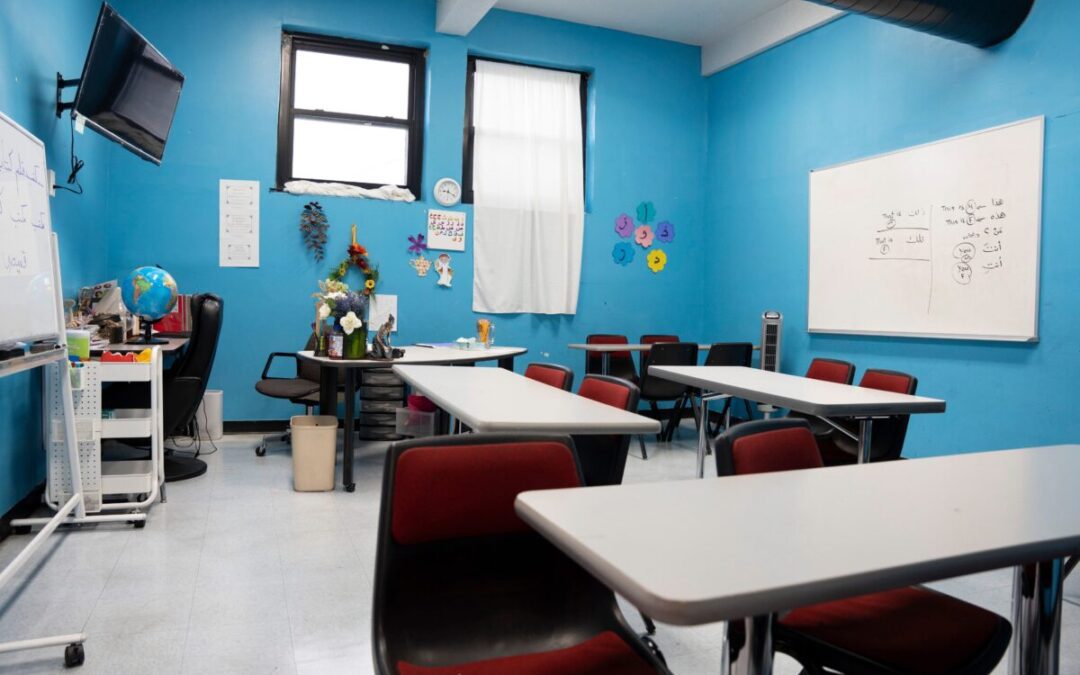
#image_title
Graded learning has stopped in districts with patchy broadband service or without means to provide student laptops.
When schools closed in March due to the coronavirus pandemic, some districts carried on with graded virtual learning, barely skipping a beat. But for others, the closures brought the school year to a grinding halt.
As instruction moves online, students without a connected device or internet connection are getting left behind. Inequity has become apparent across the state, affecting urban and rural districts alike as they struggle to provide technology for students in need.
“We are not a district that’s prepared for graded online learning at this current time,” said Kenosha Unified School District spokeswoman Tanya Ruder. “Most of it is just due to the equity issues that exist.”
Kenosha Unified is a high-poverty district, with no guarantee its students have access to the internet or laptops. Fifty-seven percent of the district’s nearly 21,000 students are economically disadvantaged, according to state Department of Public Instruction data. Despite DPI’s efforts to move schools to a 1:1 computer-to-student ratio, Kenosha is far off from that ideal, Ruder said.
In the Lac du Flambeau School District, a state-high 95 percent of students are economically disadvantaged. The district is 1:1, but there is no reliable way to ensure all the students can connect to WiFi on their devices, said District Administrator Larry Ouimette. The district has placed an order for mobile hotspots that use cellphone networks to create a WiFi signal for students without a home internet connection.
But the hotspots are on backorder due to high demand, Ouimette said, and even when they arrive, there is no guarantee every student will be able to use them.
“There still may be some people who will not be able to have access because there’s just areas in Lac du Flambeau that do not get a good cell signal,” Ouimette said.
Spectrum parent company Charter Communications is providing free WiFi for students for 60 days during the coronavirus outbreak. But in Wisconsin, where broadband coverage gaps are both vast and numerous, particularly in rural communities, the promotion does not offer a solution for many families.
“It’s not a matter of calling Spectrum for free internet service,” said Tom Wermuth, administrator of the Adams-Friendship Area School District. “Right now, Spectrum does not serve our entire county. And hotspots do not necessarily work where there’s not good cell service.”
Schools in the Kenosha, Lac du Flambeau, and Adams-Friendship district are offering take-home packets and online enrichment exercises, but they do not carry the same benefits of a full graded education. Ruder said Kenosha Unified is having ongoing discussions about whether it will be able to resume graded learning. Lac du Flambeau is sticking with enrichment resources.
At Adams-Friendship, which has an economically disadvantaged rate of about 63 percent, Wermuth said the district is encouraging teachers to grade the supplemental activities they distribute, but on a pass/fail basis.
The La Crosse School District, which has an economically disadvantaged rate of just under 49 percent, is currently using enrichment packets and is aiming to return to full graded classes in mid-April, said Kevin Colburn, a social studies teacher and director of the Advancement Via Individual Determination program at La Crosse Central High School.
Colburn said he worries disadvantaged students in La Crosse and across the state will fall behind during the time they are away from rigorous coursework. But even if there is graded coursework, students may need to take care of siblings if their parents are still working, and they may not have full-time access to an internet connection.
“Our district has really concentrated in the last four or five years on equity, and I think we’ve made some great strides, but I’m just really afraid that this is going to set us back, through no fault of the kids and no fault of the teachers or administration,” Colburn said.
Not every school district has had to halt its graded education. The Elkhorn Area School District, which has a 33 percent economically disadvantaged rate, was fortunate enough to be a 1:1 district already, and it already had 50 WiFi hotspots on-hand, along with funds to order 100 more, said Superintendent Jason Tadlock.
“We want to do as much as possible to not have our kids lose opportunities or be denied opportunities,” Tadlock said. “This isn’t critiquing any other district. Everyone has their own circumstances.”
Most students in the Eau Claire Area School District are assigned a device, said Jim Schmitt, the district’s executive director of teaching and learning. The district is 1:1 with iPads for third through sixth grade, and is almost 1:1 for grades seven through 12.
District students were surveyed on whether they had internet and device access at home, and schools were able to provide students with the necessary equipment, Schmitt said. Once everything is set up, schools should be able to continue with graded online learning.
“We wouldn’t say our year’s over at all,” Schmitt said.
The crisis had made all the more apparent to Colburn, the La Crosse teacher, that educators must continue to focus on equity, but also that state elected officials must fight harder for rural broadband access.
BroadbandNow, a website that tracks internet service providers and advocates for broadband expansion, ranks Wisconsin just the 30th most-connected state. Gov. Tony Evers proposed pumping $75 million into rural broadband expansion in his 2019-21 budget, but Republicans nixed the funds. As of last October, the state classified 19 percent of Wisconsinites as underserved for broadband.
“I’ve heard a lot of people say, ‘Well, just because some kids can’t access the education, we have to get it out to the ones who can,’” Colburn said. “It’s just such a backwards way of looking at it. We have to find a way to be equitable, otherwise we’re just going to increase the education gap.”

Wisconsin public school enrollment declines continue as vouchers grow, new data show
Enrollment in Wisconsin's public school districts has continued to fall, while other types of schools are gaining students, according to the state's...

Trump’s spending cuts hit program for deaf-blind kids in Wisconsin
A program around since the 1960s helps deaf-blind children in Wisconsin so they can go to school and communicate with others, but President Trump’s...

Head Start moms won’t let Washington cut their kids’ future
While many of us were slapping on sunscreen and trying to soak up the last days of summer, moms across the country were dialing—and redialing—their...

A program helps teachers tell Milwaukee’s untold stories. The Trump administration says it will no longer fund it.
A program at Marquette University that trains Milwaukee-area teachers to incorporate the city’s untold stories – particularly those of communities...




